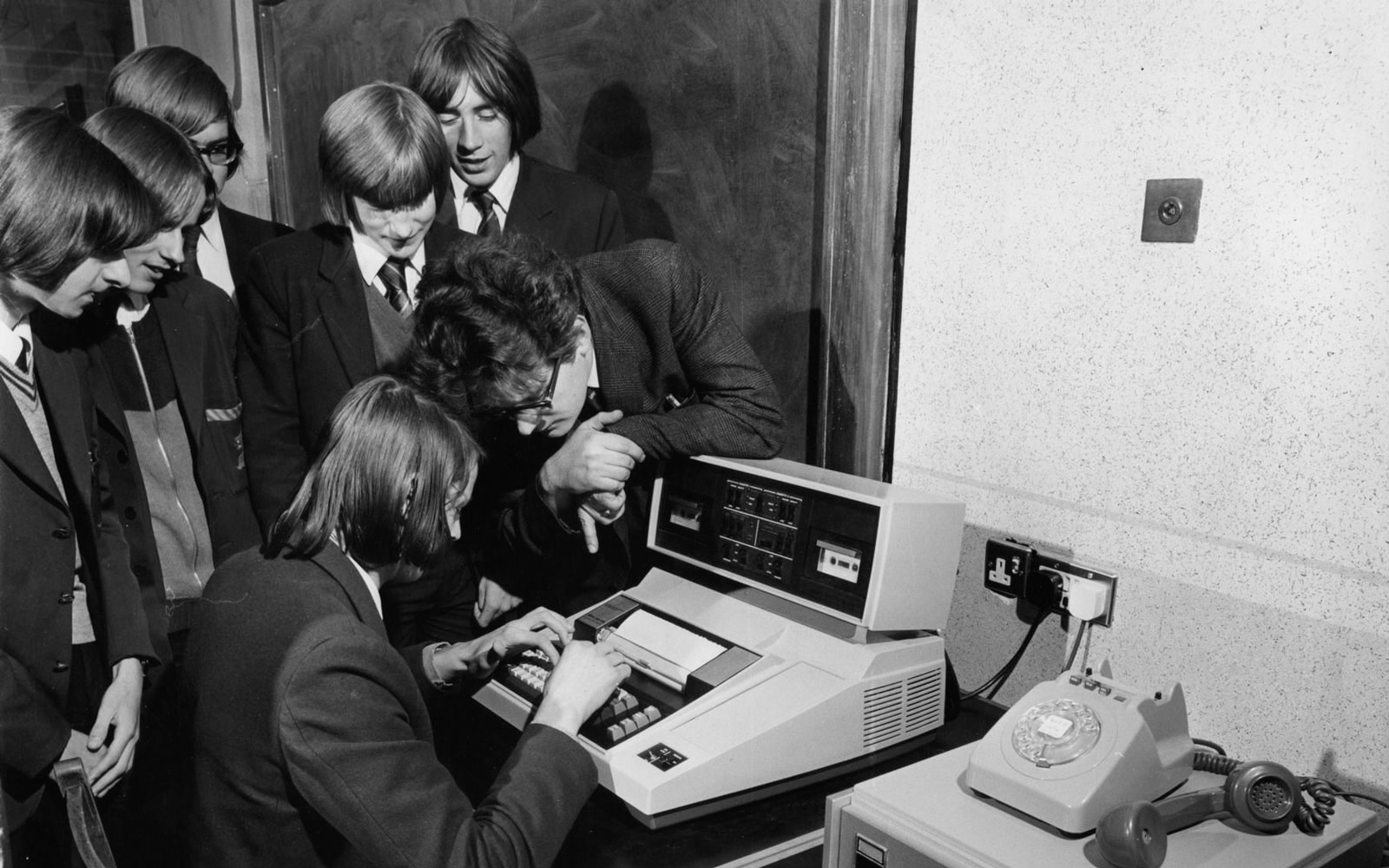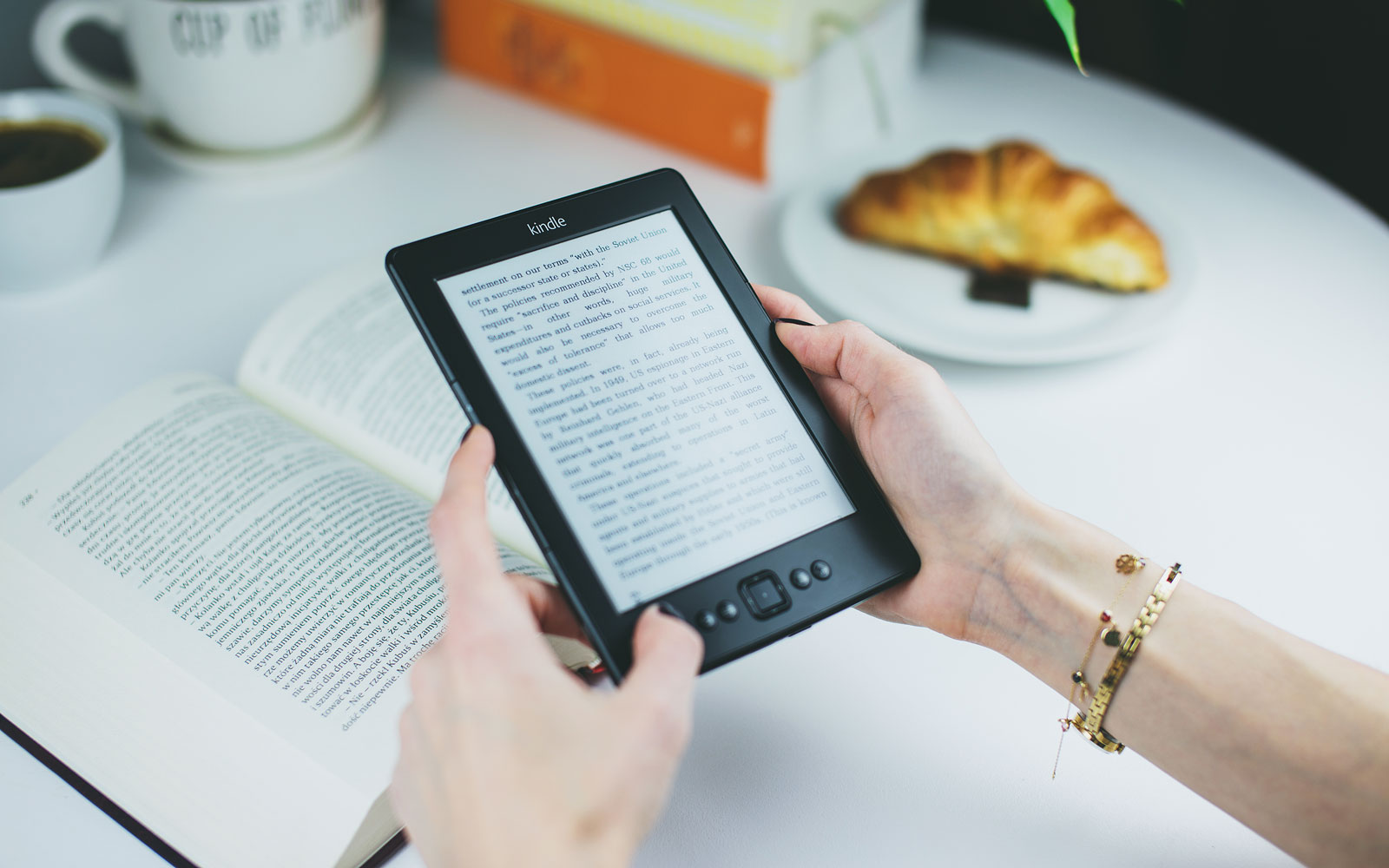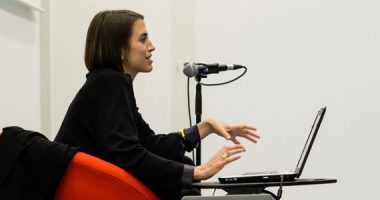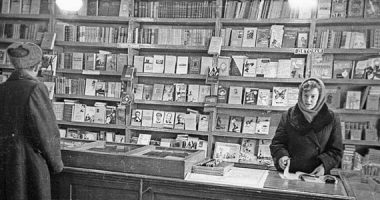
William Hulme Grammar School pupils in the Computing Laboratory, 1974 | University of Salford | CC BY-NC-ND
There is little doubt that the internet has transformed society and its habits. One of the things that has changed has been the way we produce and consume content, and the publishing world is no exception. On the production side, just as the writer’s work is no longer limited to writing, new actors are also moving into the field and exploring new approaches to the idea of authorship. At the same time, printed books are no longer the main text medium, and new digital windows are gaining ground. In the face of all of this, publishers are having to adapt to a new scenario that is still being defined.
It is no longer news that the technological advances we have seen over the past few decades – which can be traced back to the industrial revolution – have dramatically changed the way we live, including qualitative and quantitative changes in the economic, social and cultural spheres. Our technological progress in the last hundred-odd years has been much greater than in many preceding centuries. And the digital revolution crowned this progress: the internet, its rapid spread, interconnection. Many barriers disappeared as a result, communication expanded and multiplied, and information began to flow much more rapidly than ever before.
With these changes, the capacity to produce texts, videos, images, and music (content) grew unstoppably, and some of the industries that had traditionally worked in these areas began to falter and fail. Or at least, their business model began to be obsolete on the new playing field. This could also end up being the case with the publishing industry, unless it quickly changes tack and heads in a different direction. An industry based on a twentieth-century notion of copyright and on a business model that revolves around traditional ways of producing and distributing its main product – the book – needs to adapt and make major adjustments quickly in order to remain profitable.
There are many questions that need to be answered: What are we referring to when we talk about content? What is a “book” now? Is the publishing industry really aware of the how people’s habits and expectations are changing? Why does production exceed demand? How has self-publishing affected the publishing business?
When we talk about content we are referring to the raw material of a work – a diamond in the rough before it is polished, edited, reworked, reinterpreted, recoded, etc. and turned into a book, a film, an audiobook, a website, a course, or any other form or medium. A book is a format, a medium, a vehicle: a container, or one of the many ways of packaging certain content. The questions could go on and on, but we want to focus on the changes to content creation, and on the way we use and enjoy this content. On how the formats or media for this content are transformed into myriad windows for reading.
The traditional model
Traditionally, these “diamonds in the rough” came from writers or artists of their own accord, or when commissioned by an editor to produce a particular text, image, etc. This creative work then led to the production of original copies (photographs and illustrations, for example) or manuscripts (texts). Once finished and submitted to a publisher, these originals were put through the editorial process. In the case of the manuscript, the process involved editing, proof-reading, design, layout, and galley proofs. After going through all of these steps, it was transferred to paper through the printing process, resulting in the object known as a “book”. This was the case throughout the twentieth century, and it is still the case today. But there is a huge number of possible nuances at each step along the way, and these nuances affect the production of the book as well as the processes, formats and consumption of the content in question.

Co-reading. Traditional book and e-book, 2016 | Freestocks | CCO
The 21st century scenario
We all know that the romantic idea of the writer at his or her desk, surrounded by piles of books, passionately hammering away at a typewriter, is an idyllic image. Writers no longer just write, they also keep a blog, manage social networks, and organise and impart online and face-to-face workshops, to name just a few of their possible tasks. Most of them earn a living through other work, that is not pure writing. In other words, the first change applies to the producer or of the content, in this case, the writer. Thanks to digital media, the activities of content-creators can also include participating in online collective creation processes. An example of this is fanfiction, in which fans of a particular work or genre write their own related works based on the original
These fictional works – which are often created collaboratively or with the input of many fans around the world, connected to the internet – use the characters, situations, and/or settings of the original works and change, expand, complete, reconstruct, or reinvent them. Platforms such as Wattpad, Goodreads, Fanfiction.net, Fanfic.es allow fans to interact, consuming the original stories and also transforming them to create new literary works. This phenomenon is in conflict with traditional ways of thinking about copyright and intellectual property, which is an issue that publishers have to deal with if they decide to publish a collective or derivative work of this kind.
Another example of a new kind of writing that is made possible by the existence of the internet is the platforms that allow writers to pour their hearts out and weigh themselves up against each other. For example, NaNoWriMo (National Novel Writing Month) is a programme that takes place in November each year, and consists of writers from around the world producing madly for a month, with the goal of generating as much content as possible. Participants start writing on 1 November each year, and the idea is to complete at least 50,000 words of a novel by 30 November. The wrimos, as they call themselves, organise face-to-face meetings during the month to offer mutual support and encouragement, and participate in small competitions related to the creative process. These “modern” writers also have a blog where they publish content specifically created for the site. These blog posts can become the trigger for other activities, such as an online course, which could in turn use or generate entries from this and other blogs. And the whole thing can end up becoming the heart of a book, in print or online form.
That is just one of the many possible examples of new mechanisms for generating content. Given these new developments, the publishing industry cannot just rest on its laurels, and must rethink its business model based on the content, rather than the medium (the book). Luckily, some projects are already heading in this direction: Planeta Hipermedia, Editorial Médica Panamericana, Campus Cep and Tiching.
Multiple reading devices
Just as there are now many different means of producing content, there are also multiple ways of consuming texts, photographs, and audiovisual material. People now read more than ever before, but not necessarily books. We can now access, at almost no cost, an enormous number of websites, repositories and blogs with interesting and useful content that is sometimes of equal or higher quality than that of books. We can follow news on our mobile phones almost as it happens, through online newspapers and social media like Facebook and Twitter. We can send and receive information instantly on a tablet, enrol in a course, organise a “webinar” and look up information on a desktop computer, and do dozens of other things on a laptop.
Reading is no longer confined to printed books. Reading goes beyond the medium and the publishing industry, and now there are multiple reading devices: a printed book is just one of them. In any case, a book may now be the product of content originally posted on a blog or a course. And inversely, a book can become the trigger for a workshop or seminar that can be imparted online or in person.
We are in the midst of an exciting time of change, when people read a great deal for many reasons: the flow of information, the scope of different media (including social networks), the high rate of literacy, etc. So we cannot say that reading is in crisis or decline. Although we could say that the publishing industry and the traditional way of understanding content creation and consumption is.
And this is the challenge facing the publishing sector: how to digitalise the business, rather than digitalise the book; how to get the most out of the content it works with, in order to offer new ways and opportunities to consume it; how to decode the habits of twenty-first century readers and offer products that live up to their expectations.






Fabia | 14 January 2019
molto interessante
andreia | 15 January 2019
el artículo es estupendo. felicitaciones!
Leave a comment